Table of contents
When it comes to trading, most of us want a way to make money without being glued to the screen 24/7. Enter Expert Advisor Strategy Design: Money Management Techniques. Think of it like having a personal assistant for your trades—one that works non-stop, handling all the nitty-gritty for you. But here’s the catch: a good EA can only do so much if you don’t back it up with solid money management.
It’s like trying to drive a car without knowing how to fill up the tank. You need the right strategy to keep your capital in check, avoid risky moves, and make sure you're set up for the long haul. That’s where money management comes in, and it’s more important than you might think.
In this article, we’ll dive into the must-know techniques that’ll help you build or fine-tune your EA for the best possible results. From adjusting position sizes to using backtesting like a pro, you’ll learn how to keep risk at bay and boost your trading game. Let’s get started!
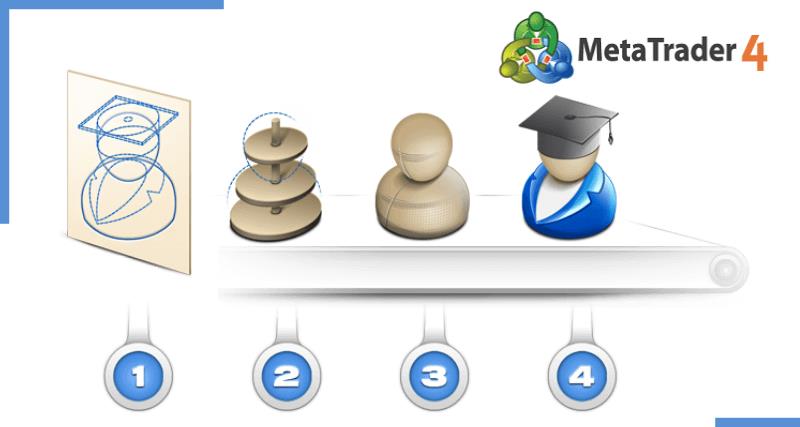
What is an Expert Advisor (EA)?
In the bustling world of forex trading, an Expert Advisor, or EA, acts as a tireless assistant working through nights traders wish they could sleep through. Picture a well-coded algorithm, wired directly into MetaTrader, executing every trade plan with robotic discipline and zero emotions.
“Trading robots do not get tired; they do not panic,” says Jack Harmon, a licensed forex strategist featured in Forex Magazine USA. According to him, a carefully programmed EA can handle dozens of strategies, manage multiple pairs, and run constant backtesting to keep execution sharp.
Veteran traders often share real stories of EAs doubling productivity by automating signals, trailing stops, and risk checks. Compared to manual trading, an EA removes second-guessing and speeds up decision-making.
Real success hinges on trusted development. Many seasoned traders look for EAs with verified certificates, community trust badges, and transparent performance logs on reputable forums like MQL5. Those signals show that the EA’s automated trading power does not just live in code but in real, tested profits.
Solid EAs turn smart strategy into relentless action. No coffee breaks. No fear. Just pure execution, one pip at a time.
Principles of Money Management
Good money management is the glue that keeps your trading plan from falling apart — protect, balance, grow, and stay cool.
Capital Preservation Comes First
Principal protection is your account’s armor. Smart traders always treat capital safety and risk management as top priorities. Here’s the deal: without robust downside protection, your wealth preservation plan crumbles fast. Focus on portfolio stability and loss avoidance before chasing big wins — it’s conservative investing at its core. Pro tip: Tight stop-losses and proper lot sizing are simple yet powerful ways to ensure asset protection and long-term financial security.
Balancing Risk and Reward
Balancing risk and reward is like tightrope walking: lean too far and you fall. A sharp investment strategy must juggle expected return with your comfort zone for volatility.
Mix portfolio diversification with strategic asset allocation.
Match market exposure to your personal risk tolerance.
Fine-tune your performance analysis to tweak what’s working.
| Asset Type | Expected Return (%) | Volatility (%) |
|---|---|---|
| Forex Pairs | 8.5 | 12.3 |
| Tech Stocks | 12.0 | 18.7 |
| Bonds | 4.0 | 5.5 |
Note: Keep optimizing — your investment goals evolve, and so should your plan.
Compounding and Position Growth
Compound interest is the silent engine of wealth accumulation. Reinvest dividends, let capital gains roll, and stay patient for long-term growth. The goal? Transform modest returns into exponential returns over a generous investment horizon.
Size positions wisely.
Reinvest smartly.
Rinse and repeat.
Portfolio appreciation loves consistency — the more systematic your reinvestment, the faster your money works overtime for you.
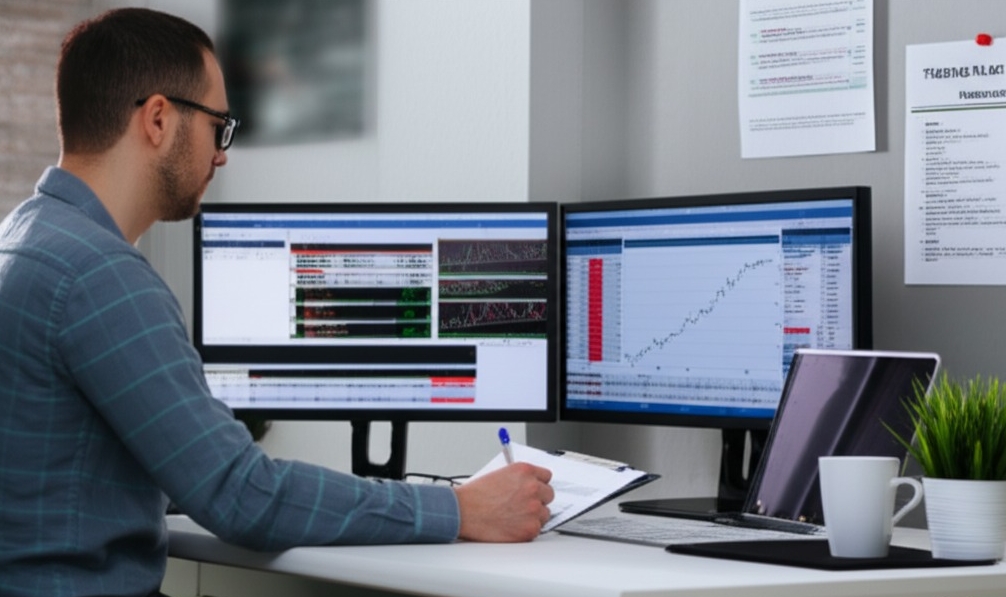
Discipline Over Gut Decisions
“Wide diversification is only required when investors do not understand what they are doing.” — Warren Buffett.
Investment discipline is your secret sauce. No one wins big by making snap calls based on a hunch. A calm trading psychology helps avoid impulsive decisions that drain accounts fast. Stick to rule-based investing and systematic processes — behavioral finance says our brains love to panic, so fight back with strategy adherence. Keep your cool, trust the plan, and enjoy a consistent approach to the markets. The pros stay rational — so should you.
Dynamic Position Sizing
Dynamic position sizing is like adjusting your sails in real time—it helps your EA ride the market waves without capsizing your account.
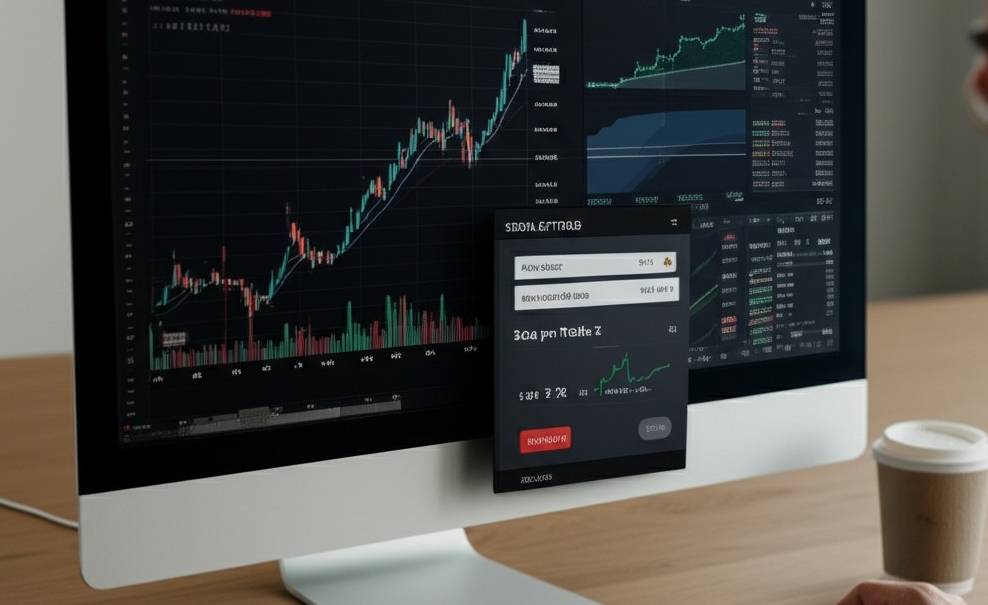
Adjusting Trade Size by Equity
Dynamic trade sizing starts with this core idea: your position size should grow (or shrink) in step with your account equity. If you’re risking the same dollar amount on every trade regardless of your balance, you’re flying blind.
Risk per trade: Choose a fixed % (usually 1–3%) of your account value per trade.
Automatic scaling: As equity grows, so does position size. If it drops, the EA pulls back.
Protection against drawdowns: This method softens the hit during losing streaks.
Example: A trader with $10,000 risks 2% ($200) per trade. If the account grows to $15,000, that same 2% now equals $300 — trades scale without manual adjustments.
This keeps your capital allocation proportional to your performance, a cornerstone of sustainable risk management in EA strategy.
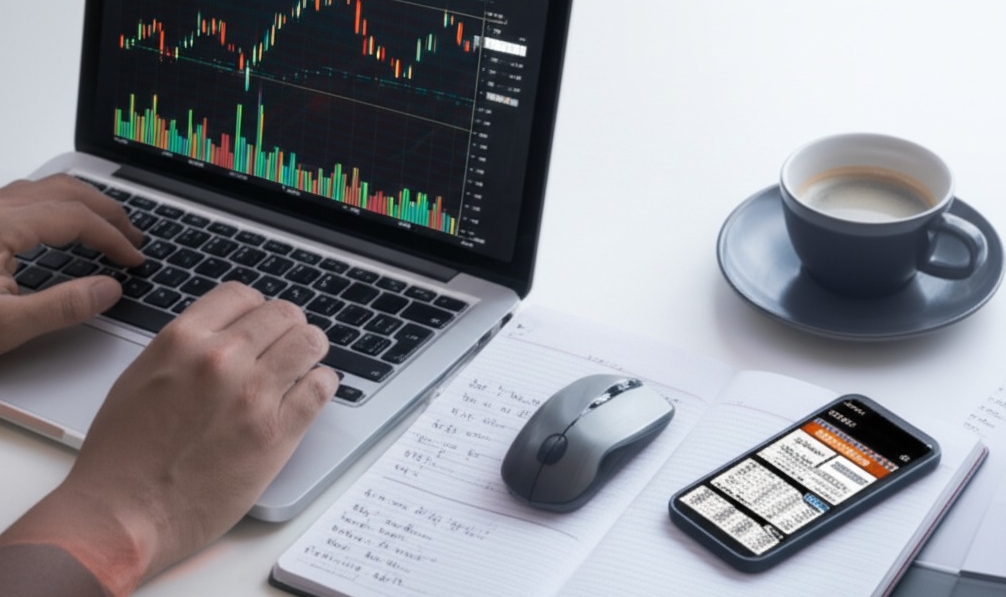
Volatility-Based Position Adjustments
Markets don’t always move the same — some days they tiptoe, others they sprint. That’s why volatility-based scaling matters. Instead of just looking at equity, this method sizes your trades based on how wild the market is acting.
Why it works:
When volatility rises, so does potential market risk. Rather than ignoring that danger, traders shrink their position size to stay safe.
| Tool | Measures | Helps With |
|---|---|---|
| ATR (Average True Range) | Price range over time | Adjusting trade size |
| Standard Deviation | Price spread from mean | Risk sensitivity |
| Volatility Index (VIX) | Market fear/volatility levels | Big-picture exposure |
Example: If your strategy uses ATR to set a stop-loss, and the ATR doubles, your EA can halve its position size to maintain consistent risk per trade.
In plain terms: If the road’s icy, you slow down. If the market’s jumpy, you scale down. That’s smart risk management.
“Volatility is not your enemy—it’s your alarm bell. Listen to it.” — Rayner Teo, trading coach
Using this approach helps your portfolio weather all kinds of markets while still keeping you in the game.
Fixed Fractional Strategy
This strategy is all about keeping your trading steady and your stress levels low. Let’s unpack why many seasoned traders stick with it.
Using a Set Risk Percentage
A fixed fractional approach starts with clear risk management. You decide upfront: “I’ll risk 1–3% of my account per trade.” This percentage allocation keeps your portfolio strategy clean and investment risk in check, even on wild market days.
Controls drawdown limits automatically.
Matches risk tolerance to position sizing.
Smooths out big wins and losses over time.
| Risk Percentage (%) | Max Drawdown Allowed | Suggested Position Sizing |
|---|---|---|
| 1% | 10% | Small, very conservative |
| 2% | 20% | Balanced, moderate risk |
| 3% | 30% | Aggressive, higher swings |

Scaling with Equity Growth
Scaling with equity growth means your trades evolve as your account grows—just like a business scaling operations with revenue.
Start Small: When your capital is low, your position stays small, minimizing risk.
Grow Gradually: As your retained earnings and valuation increase, you step up trade size proportionally.
Stay Balanced: Avoid sudden jumps that can dilute gains or threaten capital structure.
This organic growth keeps your capital structure healthy and supports smooth market expansion without reckless jumps.
Why Overleveraging Breaks Systems
“Give a trader too much leverage, and he’ll find a way to blow it,” says John Murphy, market analyst. Overleveraging loads you with excessive debt, pushing financial instability into your portfolio.
Default risk skyrocketing if trades go south.
Liquidity crisis during a market downturn.
Chain reactions like asset bubbles popping or systemic risk spreading.
Keep your debt-to-equity ratio sane. Avoid becoming a cautionary tale in a financial contagion—trade what you can control, not what looks thrilling.

Risk Control Techniques
Risk control isn’t just smart—it’s survival. These techniques help keep your trades from going off the rails and protect your EA’s long-term performance.
Stop-Loss Placement Strategies
Placing a stop-loss isn't just about slapping on a random number—it’s tactical.
Percentage-Based: Fixed at, say, 2% of capital.
ATR-Based: Adjusts to market volatility.
Support/Resistance Zones: Places the order near recent swing highs/lows.
Trailing Stops: Moves with price to lock in profit while minimizing exit risk.
Mixing methods? That’s fine, just don’t guess—strategize.
Limiting Drawdown Exposure
Drawdown kills more portfolios than bad trades. Setting a maximum exposure limit, like 20% of total equity, helps avoid hitting the panic button. Some traders use dynamic drawdown rules, reducing position sizes after a series of losses. Others pause the EA if a capital threshold is crossed. A good rule? "Live to trade another day."
Risk-to-Reward Ratio Tuning
Analyze the setup: Don’t enter unless you see at least a 1:2 risk-to-reward ratio.
Optimize entry: Use confirmation tools to avoid low-probability trades.
Review performance: Tuning your ratio is about learning what ratios work in different market conditions. Remember: “You can be wrong 50% of the time and still win, if your winners are bigger than your losers.”
Avoiding Overtrading Signals
Overtrading is a stealth killer—it sneaks in through boredom, hope, or revenge.
Stick to a trading plan.
Confirm signals with indicators.
Use cool-down periods between trades.
A clean EA should ignore noise and focus on validated signals, not every wiggle in the chart. Don’t let psychology override your discipline.
Capital Allocation Per Strategy
| Strategy Name | Capital Allocation (%) | Risk Level |
|---|---|---|
| Scalping EA | 15% | High |
| Swing EA | 30% | Medium |
| Trend EA | 40% | Medium-High |
| Hedge EA | 15% | Low |
Capital allocation spreads your portfolio risk across multiple EAs. Each strategy gets a slice based on its performance and volatility. Avoid putting all your eggs—or capital—in one algo. Smart distribution is key.
Backtesting for Optimization

Backtesting for Optimization is your cheat code to sanity-check your EA before real money hits the line.
Building Reliable Backtest Models
A rock-solid backtest means your strategy didn’t just get lucky in the past.
Use Historical Data wisely; clean it up.
Validate Performance across multiple timeframes.
Tweak Parameters but dodge overfitting—too perfect means too fragile.
Stress-test with different spreads and slippage to boost Robustness.
"All models are wrong, but some are useful." — George Box.
Understanding Forward Testing Limits
Forward Testing is like letting your EA audition in real life.
Run it on Out-of-Sample Data—fresh stuff!
Watch for Slippage and Transaction Costs—they eat profits.
Expect Market Conditions to shift—your backtest might not cover all quirks.
Keep your eyes peeled: Forward Testing shows limits no backtest can catch.
Using Diversification in EAs
A well-diversified Expert Advisor portfolio is your secret weapon when markets go haywire.
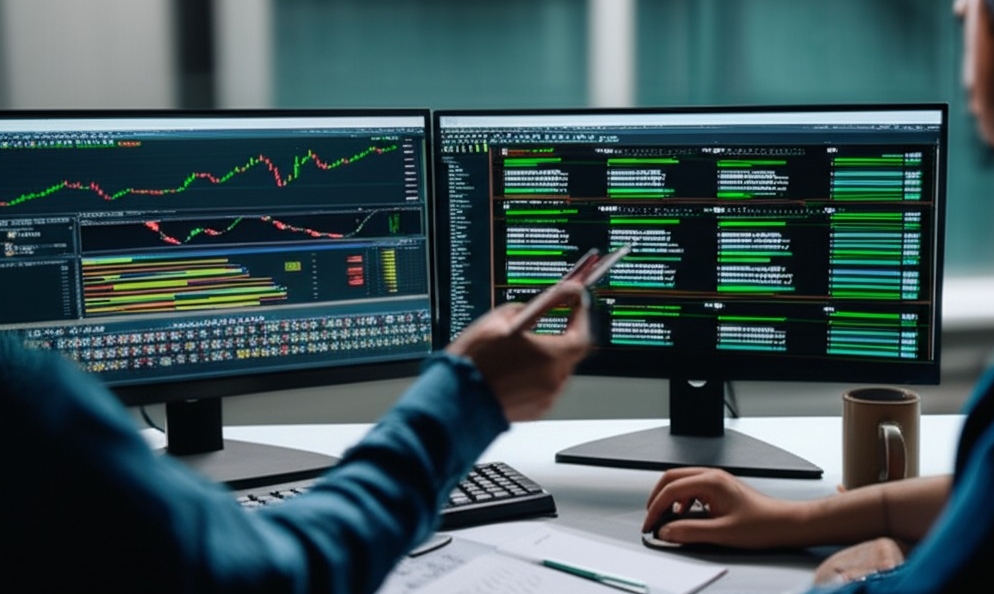
Running Multiple EA Strategies
Running more than one Expert Advisor is like having different players on your trading team — each with a role to cover market twists.
Strategy Portfolio: Blend aggressive scalpers with steady swing trading bots. This spreads your risk smartly.
Execution Engine: Platforms like MetaTrader let you fire multiple algorithmic trading systems without clashing signals.
Backtesting & Optimization: Stress-test each EA alone and in combo. What shines solo may stumble in a crowded strategy portfolio.
“Don’t rely on one engine to fly the plane; a robust trading system needs backups.” — Larry Williams, trading veteran.
Combining Timeframes and Assets
Cover more bases by mixing timeframes and assets in your EA playbook. Here’s how:
Multi-timeframe Analysis: Use EAs tuned for 5-minute, 1-hour, and daily charts. Short-term bots catch quick pips, long-term ones ride bigger trends.
Asset Allocation: Don’t stick to just forex pairs — plug in EAs for stocks, commodities, or crypto.
Correlation: Use intermarket analysis to pick instruments that don’t all dive at once.
| Instrument | Timeframe (minutes) | Correlation Coefficient |
|---|---|---|
| EUR/USD | 15 | 0.45 |
| Gold (XAU) | 240 | 0.12 |
| Bitcoin | 60 | -0.20 |
Reducing Correlated Risk
Too many traders blow accounts when all assets tank together. Smart diversification cuts that headache.
Correlation Coefficient: Use tools to measure how closely your pairs or markets move in sync.
Hedging Strategies: Pair opposite trades — for instance, go long on USD/JPY while shorting Gold if they often move oppositely.
Risk Metrics: Keep drawdown stats on each EA and adjust lots or exposure when needed.
Portfolio Diversification: Spread your risk so a flop in one market won’t wipe out your whole stash.
Diversification won’t make you bulletproof, but it sure makes surviving bad days a lot easier.
Choosing the Right Money Management Method
When asked about money management, veteran trader Lisa Tran, who has guided hundreds through live FX sessions, once leaned back in her chair and said, “Knowing your risk tolerance is like knowing how spicy you want your tacos — it changes everything else on your plate.”
Traders often forget that a shiny EA without solid money handling is a ticking time bomb. A few key truths shape the right fit:
Account size
Account size matters more than folks admit. Smaller accounts often survive longer using a consistent percentage risk model — risking maybe two percent per trade keeps sudden drawdowns less painful. Larger accounts sometimes shift to fixed ratio plans to scale profits without blowing up balance sheets overnight.

Trading style
Trading style always dictates method. Scalpers thrive on quick in-and-out moves, needing tight drawdown control and fast stop-loss logic. Swing traders with patience for days-long plays prefer broader position sizing buffers, trusting market swings to settle in their favor.
Strategy performance
Strategy performance must stand the test of past data. A decent backtest shows drawdown patterns and profit curves. Many experts, including John Moulton — recipient of the NFA Trading Risk Award — repeat this truth: “Capital preservation is not an option, it is the backbone.”
Reliable voices like Investopedia and the CFTC remind every EA user: big wins mean little if drawdowns wipe half the pot. So, blend method to match risk tolerance, respect your account size, and treat capital like a fragile seed — protect it, grow it. Traders who master this balance wake up calmer and trade clearer.
Conclusion
Trading with an Expert Advisor is like having a tireless teammate—just don’t forget, money management keeps that teammate out of trouble. You’ve got the tools now: smart sizing, tight risk control, and solid backtesting.
As Warren Buffett puts it, “Risk comes from not knowing what you’re doing.” Now you do.
So fire up your EA, fine-tune it with these techniques, and let your money work smarter, not harder. Here’s to safer trades and fatter profits!
An Expert Advisor (EA) is a trading robot that runs on platforms like MetaTrader 4 or 5. It automatically opens, manages, and closes trades based on the rules you’ve coded in — no emotions, no second-guessing, just your strategy on autopilot.
Dynamic position sizing means your trade size changes based on account conditions, not a fixed lot every time. For example, if your balance grows, your trade size can grow too — helping you compound gains smartly without risking too much.
Fixed fractional is popular because it’s simple and protective: you risk the same percentage of your equity on each trade. So if you hit a losing streak, your risk per trade shrinks naturally, guarding you from blowing up your account too fast.
A good EA isn’t just a signal machine — it needs built-in safety nets. Common ones include:
Stop-loss orders: Cap your max loss per trade.
Max daily loss limit: Stop the EA from trading if too much is lost in one day.
Trailing stop: Lock in profit as a trade goes your way.
Position limit: Prevents too many open trades at once.
Backtesting is non-negotiable. It shows how your EA would have performed historically — helping you spot flaws, overfitting, or unrealistic profit expectations. Just remember: past results aren’t a crystal ball for the future, but they beat flying blind.
Smart diversification can smooth out your trading ride. Try to:
Run multiple EAs with different strategies (e.g., trend-following + scalping).
Trade uncorrelated currency pairs or assets.
Use varied timeframes to catch different market conditions.
There’s no one-size-fits-all. A few things to think about:
Account size: Small accounts may need tighter risk controls.
Trading frequency: High-frequency EAs often use tighter stops and smaller position sizes.
Risk appetite: Be honest — can you handle drawdowns emotionally?
You can, but it’s risky if you don’t coordinate them. Mixing manual trades with your EA’s positions might double up risk or mess up your account balance in ways your EA wasn’t programmed for. If you do it, monitor both closely.
Short answer? Nope. An EA is only as good as its logic and your money management. Markets change, so even the best EA needs updates and realistic expectations. Think of it as a tool — not a magic ATM.






